How to Dispose of Flood Light Bulbs Correctly (3 Simple Steps)
-
Pete Ortiz
- Last updated:
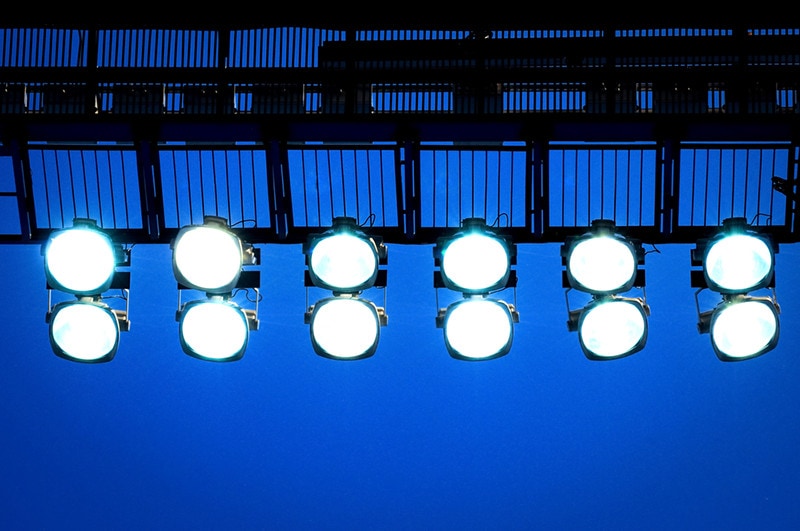
Your home, office, or business premises aren’t secure and burglar-proof if you don’t have outdoor lighting. There are also many activities that you could still enjoy past sunset with the help of lighting. One of the most powerful types of artificial illumination is flood lights, which are usually installed to give extensive light coverage from a single source.
You may have upgraded your old light bulbs for energy-efficient, brighter, and longer-lasting lighting technology and need to toss the replaced derelicts away. Before throwing these globes or tubes in the trash, note that they could contain components with toxic elements.
Whether incandescent, Compact Fluorescent Lights or CFLs, LED, or halogen, hazardous light bulb components negatively impact human or animal health and the environment. So, it’s necessary to learn how to dispose of flood light bulbs, especially if you live in a state where their disposal in landfills is illegal.
What Type of Bulbs Are Used in Flood Lights?
Flood lights are so named because they flood an area with artificial light, usually projected from one or many powerful bulbs. They provide a broad beam of high intensity by concentrating narrow light rays with specialized reflectors to illuminate stadiums, monuments, advertising billboards, car parks, and construction sites.
However, flood lighting is used on small buildings such as at home for security or aesthetic purposes. But that depends on the size of the projector and the level of illumination required. It provides increased visibility around your home’s perimeter due to its intense brightness over a wide view field.
Types of flood lighting bulbs compatible with these high-intensity and powerful fixtures include Light Emitting Diodes or LEDs, Compact Fluorescent Lights or CFLs, and halogen lamps.

LEDs or Light-Emitting Diode Flood Light Bulbs
Over the last few decades, LED lights have gained much traction in commercial and domestic use, indoors or outdoors. They provide numerous benefits, such as a longer lifespan, as they can illuminate for over 100,000 hours before needing replacement.
That energy efficiency reflects lower heat emission and LED light bulbs are more eco-friendly as they don’t contain significant amounts of toxicity, unlike mercury-laden CFLs. These bulbs also don’t fail instantly like halogens, as they fade gradually once they near the end of their lifespan.
Other advantages of LED light bulbs for flood lighting include dimming ability, availability in various colors, and instant turning on. However, they’re more expensive than other flood light bulbs and have a limited light output, meaning you need lots of them for extensive floodlights.
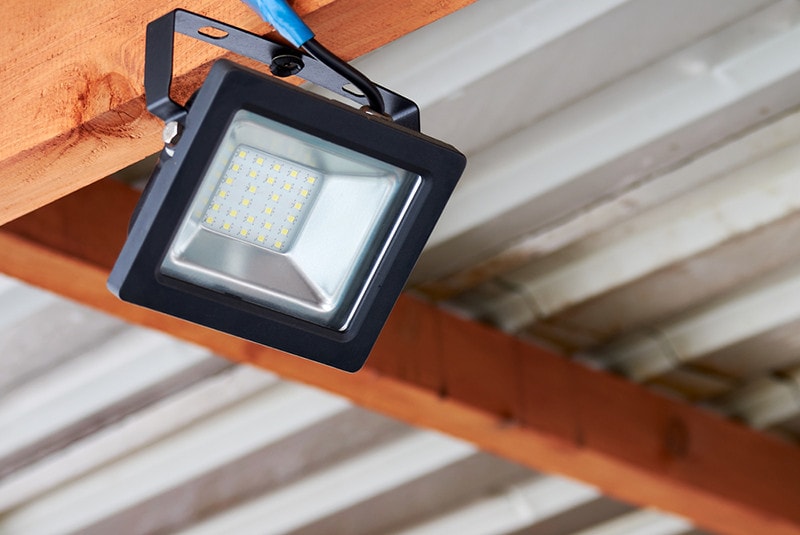
CFLs or Compact Fluorescent Flood Light Bulbs
Although not typical for flood lighting as halogens and LED bulbs, CFLs are sometimes used where you can overcome their numerous downsides. However, they are efficient due to lower pricing, as they’re three times lower in price than LEDs and have low energy consumption compared to incandescent halogens.
CFL flood light bulbs have the second most extended lifespans after LEDs, reaching up to 15,000 hours per bulb, but they need to be considered more efficient for indoor use. One of their main drawbacks is that they turn on slowly, taking a couple of minutes to reach full brightness.
The makeup of CFL bulbs includes mercury, a heavy metal that’s harmful to human, animal, and plant health and, as such, poses a danger to the environment. That means CFLs don’t recycle well and must be handled carefully to keep their glass intact. Another downside is that constant turning on and off shortens their lifespan.
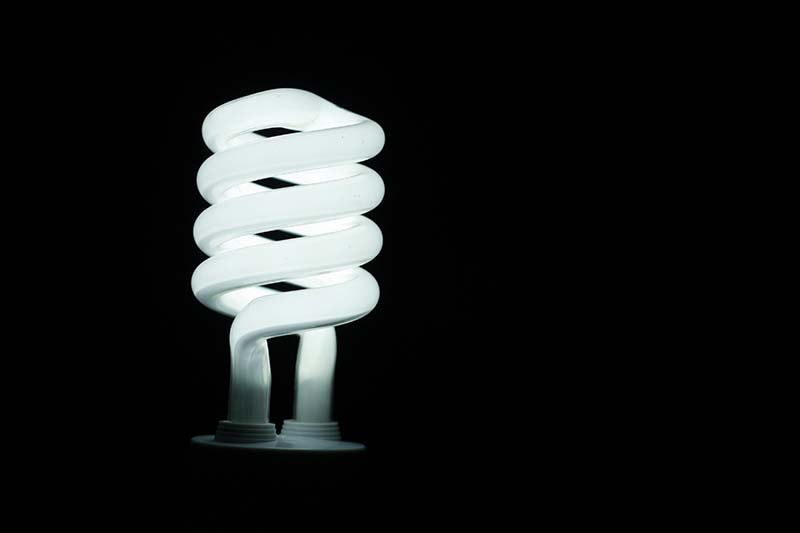
Halogen Flood Light Bulbs
In outdoor flood lights, halogen bulbs are the most common and were number one for such fixtures before the appearance of LEDs. They’re the upgraded version of incandescent light bulbs but are lowly priced, costing over ten times less than their LED counterparts.
Halogen bulbs, especially those with a high Color Rendering Index or CRI, produce significant brightness, a characteristic necessary for excellent floodlighting. Unlike CFLs, these bulbs are small and dimmable, turning on almost instantly to full brightness potential.
Flood light halogen bulbs fit in perfectly with motion-activated lighting, and since they don’t contain mercury like CFLs, they are safe for health and the environment. However, some drawbacks accompanying halogens include a significant heat output that makes them less energy efficient and sensitivity to oils.
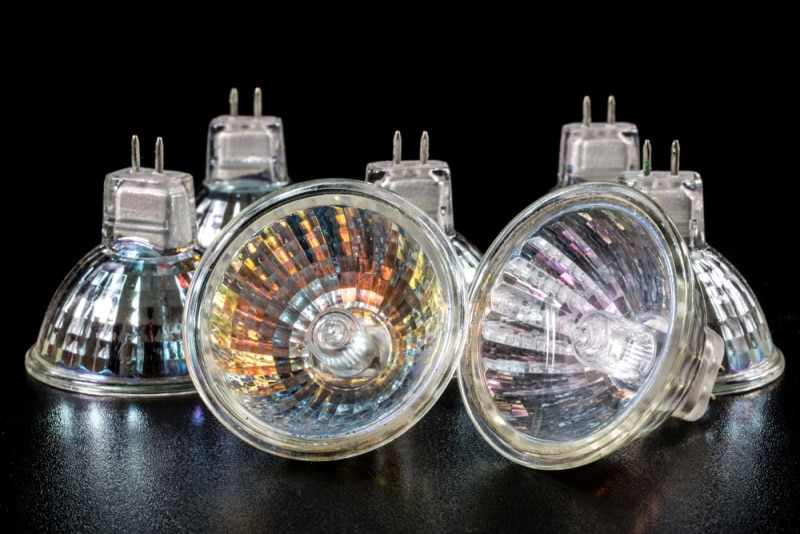
The 3 Steps How to Dispose of Flood Light Bulbs
Despite the durability of some flood light bulbs, such as LEDs, they’ll burn out eventually and should be disposed of correctly. While you can throw LED and halogen bulbs in the trash, the same can’t be said for CFLs containing halogen gas or mercury.
The Environmental Protection Agency or EPA recommends that you take flood light bulbs to a certified recycler, especially if they’re CFLs. There are also numerous hazardous waste collection facilities with drop-off facilities near your location.
Here’s how to dispose of each type of flood light bulb.
1. Recycle LED Flood Light Bulbs
LED bulbs send electrons through a semiconductor which causes light-emitting diodes to produce electroluminescence like lasers. They provide long-lasting illumination using a fraction of the energy used by typical incandescent bulbs and other types.
Although some LED flood light bulb brands contain some arsenic, lead, and nickel, these are in minuscule amounts per bulb and aren’t released into the environment. As such, it’s okay to throw them in the trash. But since LEDs are 95% recyclable, it’s best to dispose of them in a recycling drop-off or take them back to the store where they were bought.
You can also search the web for specialist LED recyclers, although no national recycling regulations exist.
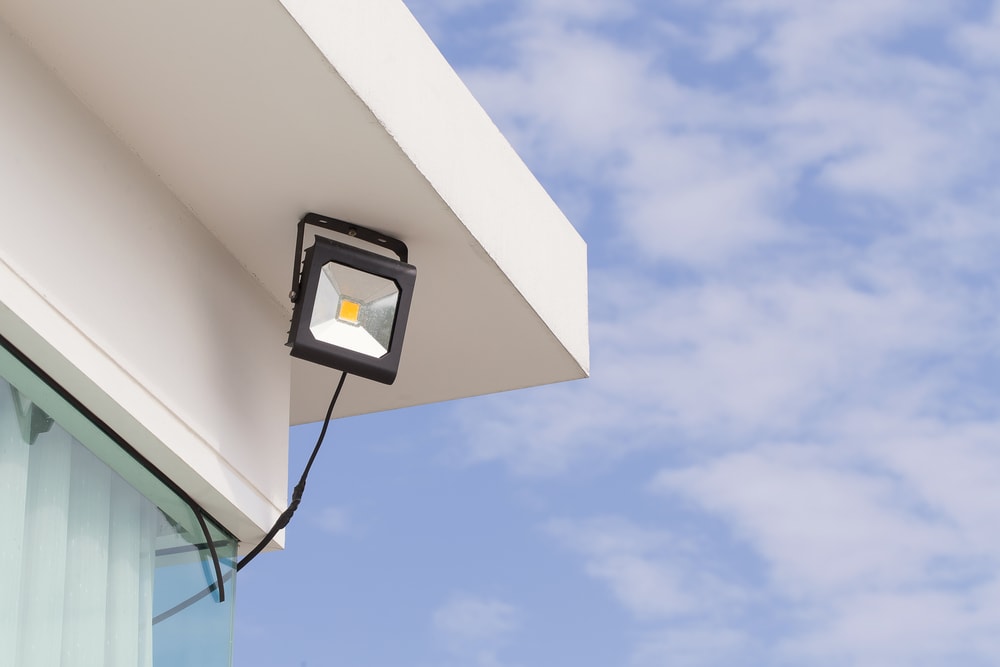
2. Dispose of Halogen Flood Light Bulbs
Halogens are an advanced type of incandescent bulbs typically used in flood lights for their significantly powerful bright light. They contain halogen gas and fine wire filaments that prove challenging to recycle.
These bulbs are challenging to break like their older counterparts and can be thrown into your household trash as they don’t contain hazardous toxins. Follow these steps to dispose of halogen flood light bulbs:
- Wrap the bulb in disposable and recyclable packaging such as newspaper, cardboard, or their original box to prevent the glass from breaking.
- Check if your state, city, or county has a recycling program for halogen bulbs before tossing them into household garbage cans or bins.
- Drop off your bulb at a recycling center or use a curbside facility if available after ensuring they take halogens and at what fee, if any.
- Contact the manufacturer or check their website for a mail-back program and pad the package for shipping.
- If you don’t have another option, wrap the halogen bulb in a plastic bag to prevent broken glass hazards and put it in your household garbage or regular trash.
3. CFL Flood Light Bulb Toxicity and Recycling
Dispose of CFL flood light bulbs safely since they contain toxic substances harmful to health and the environment. But as long as they don’t break, the mercury and phosphors in these bulbs aren’t dangerous, and while they’re recyclable, it’s a delicate and inefficient process.
While there is a need for national legislation for the disposal or recycling of CFL bulbs, they must be collected separately. That helps prevent the glass from breaking and releasing mercury into the trash, dumpster, or compactor, which ends up at an incinerator or landfill.
Mercury is harmful, especially to young children and pregnant women, as it can cause neurological damage, skin rashes, digestive issues, and respiratory problems. As such, you shouldn’t break the glass of a CFL flood light bulb as that will let the heavy metal out, contaminating your environment.
Metals, glass, and other materials that make up a CFL light bulb are reusable except for the toxic mercury and phosphor powders. There’s an end-of-life fee to recycle CFLs, and if you can’t find a center or facility that’ll take them, return the dead bulbs to their retailer if they have a mail-back program.
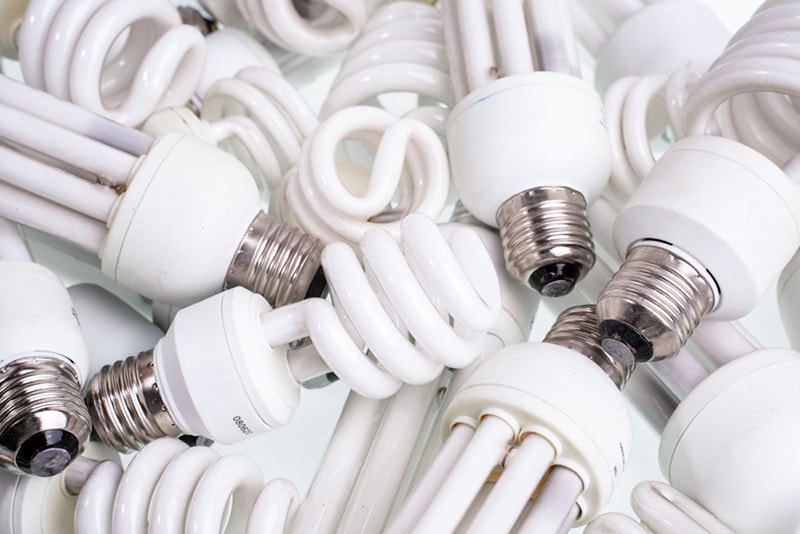
What Should You Do If CFL Flood Light Bulbs Glass Breaks?
Of all the flood light bulbs, CFLs contain significant toxicity from the mercury inside their glass tubes, and safe disposal is highly recommended. But since accidents happen, particularly when you’re changing the bulb once it’s burnt out, you must know what to do to prevent environmental contamination.
If the CFL bulb breaks inside your home or another room, send everyone outside, including pets, for at least 10 minutes. Turn off your air conditioning or HVAC system to prevent the potentially toxic mercury vapor from circulating and avoid using a vacuum cleaner as it only distributes the powder.
Use protective gloves and cardboard, an index card, or stiff paper to scoop up powder residues and bits of broken glass, disposing of them in a plastic jar or bag. With the sticky side of cello tape or duct tape, lifts any remaining powders or glass from the surface.
Wipe the area clean using damp paper towels or disposable wipes, placing them in the plastic bag or jar along with the used duct tape, broken glass, and powder. If there are no hazardous waste management programs in your city or county, place the CFL bulb pieces in a plastic bag and put them outside but not in the garbage can or dumpster.
 Conclusion
Conclusion
The most common light bulbs in flood lighting are LEDs, CFLs, and halogens, which offer energy efficiency, bright light, and low heat. Follow the correct bulb disposal guidelines for your safety, health, and the environment’s well-being, and remember to clean up if a CFL tube breaks accidentally.
- Should I Check My State, County or City’s Regulations on Recycling before Disposing Light Bulbs?
- Are LED Flood Light Bulbs Powerful Enough To Provide an Intensive Beam and Wide Area View?
- What’s the Best Type of Floodlight Bulb to Replace CFLs With?
- Is It Safe to Throw Halogen Floodlight Bulbs in Your Household Trash?
See also:
Featured Image Credit: Yarygin, Shutterstock
Contents


